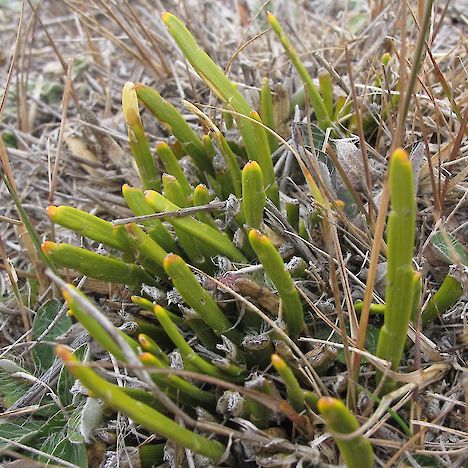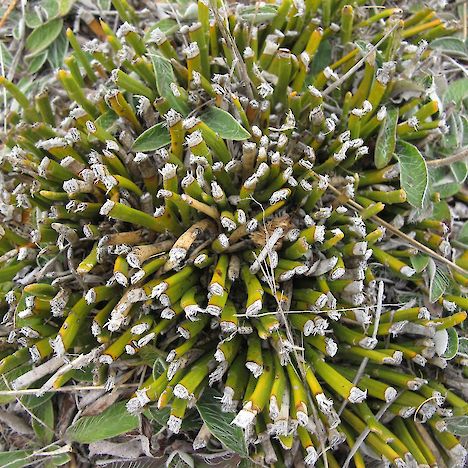Threat category:
At Risk: Declining?Regions:
Marlborough, Canterbury, OtagoDistribution:
Marlborough, Canterbury, Otago
Native brooms in the genus Carmichaelia have a variety of growth habits, from small trees to low-growing shrubs, and even one climbing species. They have characteristic ‘pea flowers’ which can be very showy in some species. Many grow in areas that have potential for afforestation, and most are susceptible to browsing by stock and feral animals. As a consequence, several species are threatened.
Key Features
- A stubby, dwarf broom with many short, erect branchlets rising in clumps from the ground.
- The branchlets are green or yellow and often have red tips.
Distribution and Habitat
- South Island; Marlborough, South Canterbury and Otago.
- Habitat includes moraines, river flats and tussock grasslands.
Threats
- Habitat modification and loss.
- Competition with weeds.
- Rabbit, hare and stock browse.
Management Opportunities
- Survey for new locations.
- Mark known sites.
- Protection of habitat – avoid afforestation.
- Control rabbits and hares, exclude stock.
- Ensure that forest owners are aware of potential habitats and can recognise the species.
Monitoring Options
- Check existing populations annually.
- Report new locations to DOC, NZPCN.
Further Information and Support
- New Zealand Plant Conservation Network (NZPCN). http://www.nzpcn.org.nz
- Pest control - Department of Conservation, Regional Councils.
- References:
- Dopson et al. (1999). The conservation requirements of New Zealand’s nationally threatened vascular plants. Threatened Species Occasional Publication 13. Department of Conservation, Wellington.



